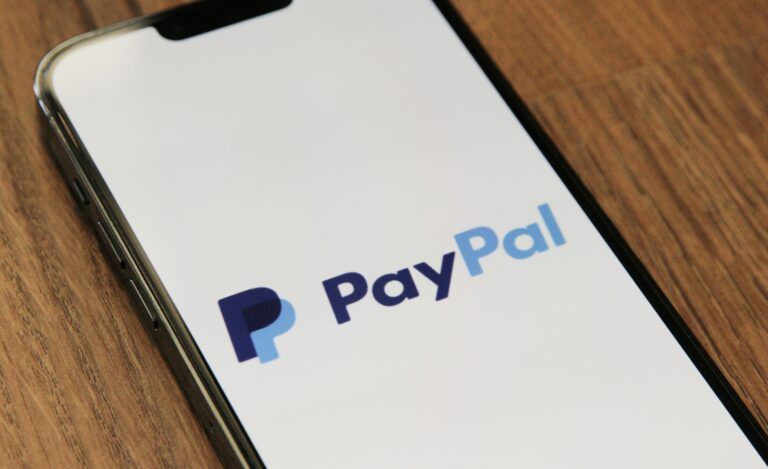Stripe, one of the world’s leading online payment processors, recently updated its list of restricted businesses to include “content creation.”
This addition raises concerns among content creators who rely on Stripe to process payments for their online businesses. The new restriction leaves many wondering if Stripe will start banning or shutting down accounts associated with content creation.
Let’s take a closer look at what Stripe’s new content creation restrictions entail, why they’re implemented, and what it means for content creators.
Avoid Stripe bans with a REAL merchant account.
What Stripe Restricts Under “Content Creation”
According to Stripe’s updated restricted businesses list, there are two main types of content creation activities that fall under scrutiny:
- Content-related tips and gifts
- Purchases of access to exclusive content or digital goods
Let’s break down what each of these categories entails.
Content-Related Tips and Gifts
This restriction applies to platforms or creators who receive tips, donations, or gifts from their audience. Some examples include:
- A “tip jar” or donation button on a creator’s profile or website
- The ability for fans to send monetary “gifts” to creators during live streams
- Recurring donations or patronage to support a creator’s overall work, without any exclusive perks
Essentially, Stripe prohibits using their platform for direct fan-to-creator payments that could be interpreted as gratuities rather than purchases.
Purchases of Access to Exclusive Content or Digital Goods
The second restricted category pertains to selling access to gated or exclusive digital content. This might include:
– Paywalled blog posts, videos, or podcasts
– Members-only forums, chat rooms, or social media feeds
– Downloadable content like ebooks, templates, or graphics that are only accessible to paying customers
Stripe allows the sale of digital products in general. However, they restrict models that charge for access to content without transferring full ownership to the customer. Subscriptions that unlock a library of content are still permitted.
It’s important to note that these restrictions are somewhat open to interpretation and may require clarification from Stripe on a case-by-case basis. Content creators whose businesses revolve around these models need to carefully review their specific offerings and contact Stripe directly for guidance on whether they comply with the new rules.
The Types of Businesses Considered “Content Creation”
The term “content creation” encompasses a wide range of online businesses and entrepreneurs who produce and share original material to engage, educate, or entertain their audience. While the specifics may vary, these content creators typically monetize their work through ads, sponsorships, subscriptions, or selling related products and services. Here are some of the most common types of businesses that fall under the content creation umbrella.
Artists
Artists of all kinds, including visual artists, musicians, writers, and performers, can be considered content creators when they share their work online. They may post images or videos of their art, release songs or albums digitally, publish written pieces, or live stream performances. Many artists use platforms like Instagram, YouTube, Patreon, or personal websites to showcase their creations and build a following.
Coaches
Coaches in various niches, such as business, health, relationships, or personal development, often create content to attract clients and establish their expertise. They may write blog posts, record podcasts, make videos, or share social media posts offering tips, insights, and motivation related to their coaching specialty. This content helps demonstrate the value they provide and builds trust with potential customers.
Instructors
Online instructors and course creators are content creators who share educational material in their field of knowledge. They may produce video lessons, write detailed guides, design infographics, or develop interactive exercises. Instructors can use learning platforms like Udemy or Teachable, or self-host their courses on a personal site. The content they create is the product they are selling to students.
Influencers
Influencers are content creators who have built a substantial following in a particular niche, such as fashion, beauty, fitness, gaming, or travel. They create engaging posts, photos, and videos to entertain and inspire their audience, while also promoting relevant products or brands. Influencers often monetize through sponsored content, affiliate marketing, or creating their own products. Their content is designed to be highly shareable and relatable to their target demographic.
Other Online Content Creators
There are many other types of online businesses that rely on content creation to attract an audience and generate income. Some examples include:
- Bloggers who write articles on various topics
- YouTubers who make video essays, reviews, comedy sketches, or vlogs
- Podcasters who discuss news, interview guests, or share stories
- Streamers who broadcast live gaming sessions or creative projects
- Photographers who take and edit photos for stock sites or prints
- Graphic designers who make logos, infographics, or social media assets
What unites all of these diverse content creators is the drive to produce original, valuable material that resonates with their specific audience. The content itself is the core product, even if money is made through other means like advertising or merchandising.
Scale your content creation business with DirectPayNet.
Which Content Creation Business Models Stripe Allows
While Stripe’s new restrictions on content creation may seem broad, there are still several viable business models that creators can use to monetize their work while complying with Stripe’s policies.
The key is to focus on selling content outright or providing subscription access to a catalog of content that customers can keep, rather than gating exclusive content or perks behind a paywall. Here are some content creation business models that are generally allowed on Stripe:
Selling Content Outright for a One-Time Purchase Price
Content creators can sell individual pieces of content, such as ebooks, courses, templates, or media files, for a one-time fee. In this model, the customer pays once and receives full ownership of the content, which they can download, keep, and use indefinitely. This is similar to a typical e-commerce transaction and is permitted on Stripe.
Examples:
- An artist sells digital prints of their artwork for a set price
- A coach sells a comprehensive course teaching their methodology
- A writer sells an ebook version of their novel or non-fiction book
Subscription Access to a Catalog of Content
Another allowed model is offering a subscription that grants access to a library or catalog of content. In this case, subscribers pay a recurring fee to maintain access to the full collection, but they do not necessarily own the individual pieces of content. The key distinction is that subscribers can view and use all of the content in the catalog for as long as they remain subscribed, rather than unlocking exclusive content or perks.
Examples:
- A fitness instructor offers a monthly subscription to a database of workout videos and meal plans
- A stock photographer sells a subscription to their entire photo library for commercial use
- A learning platform provides a subscription to all of its courses and resources
Not Allowed: Selling Access to Exclusive Content or Perks
What Stripe prohibits is using their platform to charge for access to gated content or exclusive perks that customers do not fully own or cannot freely access after purchase. This includes models like:
- Paywalling specific blog posts, videos, or podcast episodes
- Selling tiered memberships that unlock exclusive content or community access
- Offering paid upgrades or bonuses within a course or program
Essentially, Stripe wants to avoid being used as a middleman for transactions where the value is primarily in the form of exclusive access, rather than the transfer of ownership of digital goods. Content creators who rely on these gated content models will need to find alternative payment processors or restructure their offerings to focus on selling content outright or providing catalog-based subscriptions.
Stripe Has Always Banned Content Creation
While the clarification on Stripes website is new, content creation has always been restricted.
Stripe bans these businesses due to the risk to their own business. Stripe is a payment aggregator. That means they give you a slice of their own merchant account to operate under. Your risk is their risk, and the riskier your business is, the higher the likelihood Stripe ruins their relationship with banks.
It’s all about saving their own business in the end and rarely is there anything wrong with your own.
How Content Creators Can Adapt and Thrive
If your content creation business currently relies on a model that is now restricted by Stripe, don’t panic. There are steps you can take to adapt and continue thriving as a creator, even if it means making some changes to your payment processing setup. Here’s what we recommend:
Don’t Rely on Stripe as Your Payment Processor
If your business model involves selling access to exclusive content or offering content-related tips and gifts, it’s clear that Stripe is no longer a viable option for processing those payments. Continuing to use Stripe for restricted transactions could result in account suspensions, frozen funds, or even legal issues. It’s best to proactively seek out alternative payment solutions that align with your specific business needs.
Open a Dedicated Merchant Account That Supports Your Content Business Model
For content creators who want to maintain maximum control and flexibility over their payment processing, opening a dedicated merchant account is often the best solution. A merchant account is essentially a business bank account that allows you to accept credit and debit card payments directly, without relying on a third-party processor like Stripe.
When choosing a merchant account provider, look for one that specifically supports content creators and understands the unique needs of your business model.
By working with a merchant account provider that is friendly to content creators, you can continue using your preferred business model without worrying about sudden account restrictions or closures.
Only Use 3rd-Party Processors Like Stripe, PayPal, and Square as a Backup
While third-party payment processors like Stripe, PayPal, and Square can be convenient and user-friendly, they are not always the most stable or reliable option for content creators. These platforms have broad, one-size-fits-all terms of service that can change at any time, leaving certain business models out in the cold.
That’s why we recommend using these processors only as a backup or secondary option, rather than relying on them as your sole payment solution. By diversifying your payment methods and prioritizing dedicated merchant accounts, you can protect your business from potential disruptions and maintain a steady cash flow.
Adapting to Stripe’s new content creation restrictions may require some upfront work and changes to your payment setup. But by being proactive and seeking out payment solutions that support your unique business needs, you can continue to thrive as a content creator and focus on what you do best: creating valuable, engaging content for your audience.
CONNECT WITH A PROCESSOR THAT TRULY BACKS YOUR BUSINESS
TL;DR
– Stripe recently added “content creation” to its list of restricted businesses, specifically targeting content-related tips and gifts, as well as purchases of access to exclusive content or digital goods.
– This has raised concerns among content creators who rely on Stripe for payment processing, as they may face account bans or shutdowns.
– Content creation businesses affected by these restrictions include artists, coaches, instructors, influencers, and other online creators who monetize through tips, exclusive content access, or gated perks.
– To adapt and thrive under these new rules, content creators should:
1. Avoid relying solely on Stripe for payment processing, especially if their business model involves restricted activities.
2. Consider opening a dedicated merchant account with a provider that supports their specific content creation business model, such as CCBill, Segpay, or 2000Charge.
3. Use third-party processors like Stripe, PayPal, or Square only as backup options rather than primary payment solutions.
– Content creation business models that are generally allowed on Stripe include selling content outright for a one-time purchase price and offering subscription access to a catalog of content that customers can keep.
– By proactively seeking out payment solutions that align with their unique needs and diversifying their payment methods, content creators can protect their businesses from potential disruptions and continue to thrive in the face of Stripe’s new restrictions.









